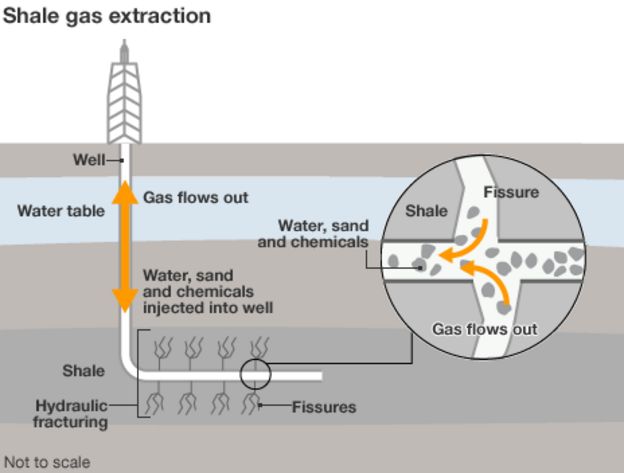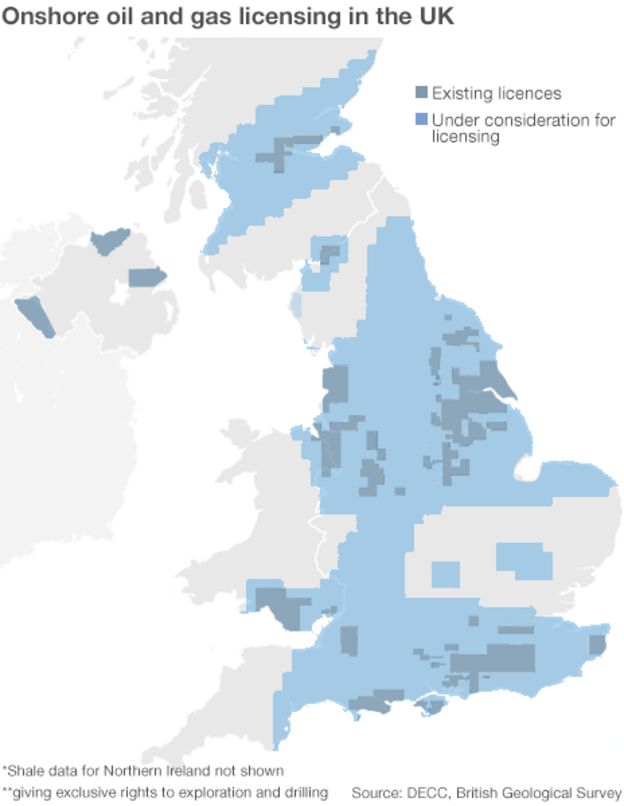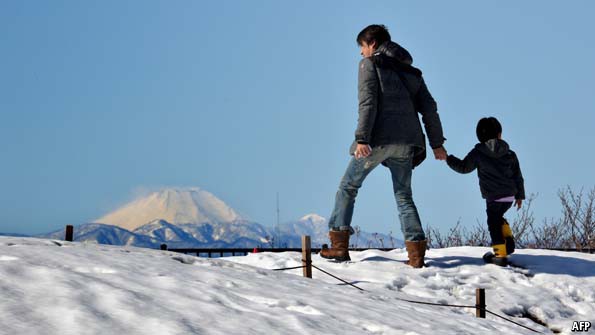Into the unknown
Japan is ageing faster than any country in history, with vast consequences for its economy and society.
So why, asks Henry Tricks, is it doing so little to adapt?
FOR a glimpse of Japan's future, a good place to visit is Yubari, a former mining town on the northern island of Hokkaido, which four years ago went spectacularly bust with debts of ¥36 billion ($315m). It is a quiet spot, nestled in a valley at the end of a railway line. When the coal mines were working 40 years ago, 120,000 people lived there. But the mines have long since closed, and now there are only 11,000 people left, almost half of them over 65.
The town hall is like a morgue, with few lights on. In the past four years the number of civil servants has been cut in half, their salaries have shrunk by a third and they now have to mop their own floors, they complain. The town has embarked on an 18-year austerity drive to repay its debts. The public library has already closed down. This autumn six primary schools merged into one.
Even so the townspeople look anything but defeated. A group of 80-year-olds chatting in one café is the backbone of the local photography club. Delighted to have an audience, they show off black-and-white pictures taken in the 1950s, with children swirling around the school playground on ice skates.
Like Yubari, Japan is heading into a demographic vortex. It is the fastest-ageing society on Earth and the first big country in history to have started shrinking rapidly from natural causes. Its median age (44) and life expectancy (83) are among the highest and its birth rate (1.4 per woman) is among the lowest anywhere. In the next 40 years its population, currently 127m, is expected to fall by 38m. By 2050 four out of ten Japanese will be over 65.
Like Yubari, Japan is also deeply in debt. But whereas Yubari's fiscal problems arose from a huge public-spending splurge aimed at wooing back its young people (at one point it had an international film festival and 17 cinemas), Japan at the start of its journey into the demographic unknown already has one of the highest debt-to-GDP ratios in the world.
Japan is already full of Yubaris. Between 2000 and 2005 the number of people living in small towns and villages across Japan fell by 10m. Only shimmering cities like Tokyo continue to swell, but even they will start to look old within a few decades.
What matters most for Japan's economic growth prospects is the decline in its working-age population, those aged 15-64, which has been shrinking since 1996. For about 50 years after the second world war the combination of a fast-growing labour force and the rising productivity of its famously industrious workers created a growth miracle. Within two generations the number of people of working age increased by 37m and Japan went from ruins to the world's second-largest economy.
In the next 40 years that process will go into reverse (see chart 1). The working-age population will shrink so quickly that by 2050 it will be smaller than it was in 1950. Unless Japan's productivity rises faster than its workforce declines, which seems unlikely, its economy will shrink. This year it was overtaken by China in size.
The impact will become even clearer in 2012 when the first members of the 1947-49 baby-boom generation hit 65. From then on, some believe, demography will seriously aggravate Japan's other D-words—debt, deficits and deflation. Unless the retirement age rises in lockstep with life expectancy, ageing will automatically push up pension costs, further straining public finances. Shigesato Takahashi, a senior government demographer, says it will “rock the foundations” of Japan's social-security system. It may also entrench deflation. A shortage of workers might push up wage costs, but companies will be loth to invest in new factories.
This will make Japan a test case of how big countries across the world should handle ageing and population decline. Western Europe's working-age population is already shrinking, though not as fast as Japan's. East Asia, too, will watch Japan intently. Its industrial-growth model has closely resembled Japan's in its post-war boom, rising on the same tide of an expanding workforce and export-led productivity gains. Japan has been called the lead goose in that V-formation. For now, as Florian Coulmas, a population expert at Tokyo's German Institute for Japanese Studies, puts it, Japan is “the oldest goose”. But South Korea's and China's working-age populations too will soon start to shrink.
One of the unfortunate side-effects of ageing in Japan is that it will be the young who suffer the most. Although unemployment levels may remain among the lowest in the rich world, many of the jobs will be lowly ones. The children of the baby-boomers are currently entering their 40s, which creates a secondary bulge at the middle-manager level of Japanese business. Because of a seniority-based pay system, this puts a huge strain on business costs, leaving less money to provide young people with training and good jobs.
It is sometimes said that Japan's risk appetite mirrors that of its baby-boomers. In the prime of their working lives they wanted to conquer the world with their products. Now, in their 60s, they want a quieter life. The same seems to go for the country as a whole.
Yet to support them in their retirement, and provide the generations that follow them with the economic opportunities they need, Japan cannot afford to drift. When there is no ambulance to answer a pensioner's anguished telephone call, as sometimes happens in Yubari, the consequences become all too clear. When couples find they cannot afford to care for a bedbound parent, let alone a young child, demography becomes a social disaster.
This special report will argue that Japan must tackle this issue head on. It needs a grand plan for an ageing population. “From a business standpoint, right now the threat [of ageing] overwhelms the opportunity,” says Yoshiaki Fujimori, head of GE in Japan. “Most people are aware of it, but they don't know how to cope with it.” Boosting productivity to counter the effects of a shrinking workforce will require a cultural revolution, especially in business. Embracing the markets opening up in Asia will mean overcoming 150 years of mistrust of Asia (heartily reciprocated).
There are two reasons for guarded optimism, though. One is that, unlike a lot of rich countries, Japan has not forsaken its industrial heritage. It has a cohesive workforce and it can still come up with innovative products.
The other reason for hope is political. Japan made a huge bid for fresh thinking last year when it ended the one-party rule that had, in effect, been in place since 1955. The Democratic Party of Japan (DPJ) that won the 2009 election, now led by Naoto Kan, has bungled much of its first year in office, but its victory alone was a clear indication of voters' growing impatience with politics as usual. Now the party will need to show that it can deliver.
http://www.economist.com/blogs/banyan/2014/03/japans-demography
The incredible shrinking country
A QUIET but constant ticking can be heard from the demographic time bomb that sits beneath the world’s third-largest economy. This week it made a louder tick than usual: official statistics show that the population declined last year by a record 244,000 people—roughly the population of the London borough of Hackney.
Japan's population began falling in 2004 and is now ageing faster than any other on the planet. More than 22% of Japanese are already 65 or older. A report compiled with the government’s co-operation two years ago warned that by 2060 the number of Japanese will have fallen from 127m to about 87m, of whom almost 40% will be 65 or older.
The government is pointedly not denying newspaper reports that ran earlier this month, claiming that it is considering a solution it has so far shunned: mass immigration. The reports say the figure being mooted is 200,000 foreigners a year. An advisory body to Shinzo Abe, the prime minister, said opening the immigration drawbridge to that number would help stabilise Japan’s population—at around 100m (from its current 126.7m).
But even then there’s a big catch. To hit that target the government would also have to raise the fertility rate from its current 1.39, one of the lowest in the world, up to 2.07. Experts say that a change on that scale would require major surgery to the country’s entire social architecture. One of the first things Japan would need to do, says Kathy Matsui, chief Japan equity strategist at Goldman Sachs in Tokyo, is make it easier for mothers to work. “Evidence shows that work-forces with a higher female participation rate also have higher birth rates,” she says.
Mr Abe has invoked Ms Matsui in his quest to boost the birth rate. Progress towards bringing women into the labour force is far from assured however. The latest Gender Gap Report, compiled annually by the Davos-based World Economic Forum, ranked Japan 105 out of 136 countries, down 25 places from 2006. (South Korea—another country with a fertility crisis—does even worse, coming in at 111th place.)
The looming crisis has so alarmed Japan’s government that in 2005 it created a ministerial post to raise fertility. Last year a 20-member panel under the ministry produced a desperate wish list to reduce what it calls “deterrents” to marriage and child rearing. It included a proposal to assign gynaecologists to patients on a lifelong basis and even to provide financial support for unmarried Japanese who undertake "spouse-hunting" projects.
Immigration is being approached as a last resort. Even so the prime minister faces tough choices. The United Nations estimates that without raising its fertility rate, Japan would need to attract about 650,000 immigrants a year. There is no precedent for that level of immigration in this country, which is still a largely homogenous society.
Roughly 2% of Japan’s population is foreign. And even this figure includes large numbers of permanent residents—mostly Chinese and Koreans—who have been here for generations. Tellingly, the recent story about the government’s discussion of immigration broke in the right-wing Sankei newspaper (in Japanese), which is especially unlikely to embrace the idea of a Chinese family living on every Japanese street.
Japan’s demographic dilemma grows more urgent by the year. Last week the government passed the nation’s largest-ever budget—a mammoth $937-billion package swelled by welfare and pension spending. Japan is already weighed down by one of the world’s largest public debt burdens. With its inverted population pyramid, where will it find the tax base to repay this debt, and to care for its growing population of elderly?
The 2012 government report said that without policy change, by 2110 the number of Japanese could fall to 42.9m, ie just a third of its current population. It is plausible to think that the country could learn to live with its shrinking population. But that might mean also embracing a much diminished economic and political role in the world. Mr Abe would seem to be the last leader to accept that.



























